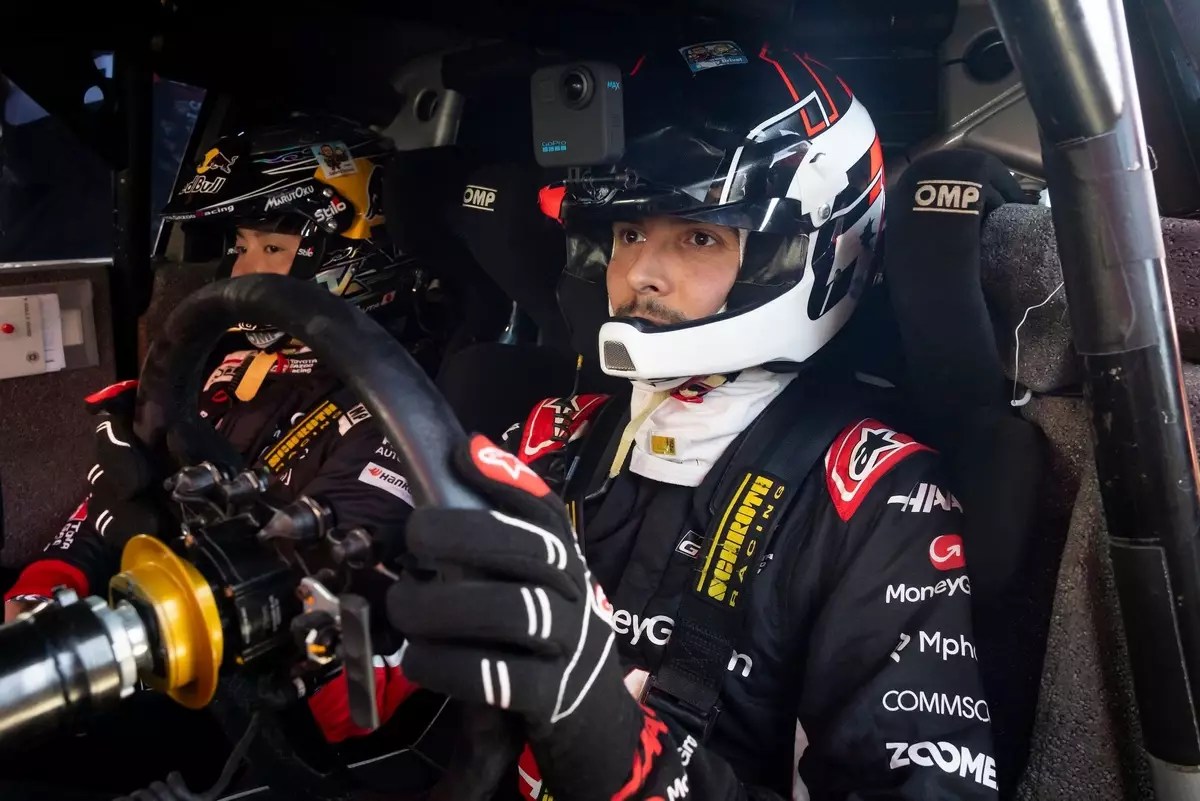Motorsport has long thrived on the thrill of competition, pushing human and machine to their maximum limits. Yet, there exists a lesser-known narrative—one of collaboration across disciplines—that can unlock fresh perspectives and aspirations for drivers and teams alike. The recent experience of Formula 1 driver Esteban Ocon testing a World Rally Championship (WRC) car during the Goodwood Festival of Speed exemplifies this. It isn’t just a celebrity stunt; it’s a testament to the enormous untapped potential in fostering relationships between racing domains. The fact that Haas, though still exploring its partnership with Toyota, can facilitate such life-changing moments suggests a paradigm shift in how motorsport teams view cross-disciplinary synergy. It reminds us that greatness often lies in embracing the unexpected, and that the boundaries we perceive are often artificial barriers delaying innovative breakthroughs.
The Power of Dreams Ignited by Unexpected Opportunities
Ocon’s candid recounting reveals a youthful passion rekindled through an extraordinary experience. His obsession with rally cars from childhood, once a distant fantasy, has now become an aspirational milestone—albeit in a new context. This revelation underscores an essential truth: exposure to different motorsport disciplines can serve as a catalyst for driver development, mental resilience, and personal growth. When a racing driver gets behind the wheel of a WRC car, especially one that is road-legal yet essentially a prototype, the psychological impact is profound. It challenges their preconceptions, enhances their adaptive skills, and fuels a deeper appreciation for vehicle engineering and handling nuances that are often overlooked in single-seater racing. Such crossovers are more than promotional stunts—they are invaluable educational tools that can inspire future innovations in vehicle design, safety, and performance.
The Limitations and Possibilities of Cross-Disciplinary Learning
While the adulation surrounding Ocon’s experience is justified, a critical lens reveals that the true potential of such collaborations remains largely unrealized. Currently, racing teams and manufacturers tend to operate within silos, focusing primarily on their core disciplines. However, this insular approach misses out on the rich exchange of ideas that could lead to breakthroughs in aerodynamics, tire technology, or driver ergonomics. The exchange between F1’s precision engineering and WRC’s rugged versatility, for instance, could inspire hybrid concepts that elevate both arenas. Ocon’s enthusiasm and willingness to consider rallying in the future point to a broader trend: drivers who are more versatile can serve as bridges, translating insights across sports and encouraging technological cross-pollination. But this potential can only be unlocked if teams recognize the strategic value of such inter-motorsport collaborations and invest in facilitating such experiences more systematically.
From Childhood Dreams to Strategic Innovation
Ocon’s statement about wanting to someday own a WRC car speaks to a deeper, human element—our innate desire for exploration and mastery. For racing teams, fostering this sense of wonder and curiosity among drivers could translate into more innovative thinking on the technical front. It’s a mutual benefit: drivers gain inspiration and a broader skill set; teams can harness this fresh perspective to challenge existing paradigms. The fact that Toyota granted Ocon a chance, and that Haas, despite its nascent partnership, is open to such opportunities, signals growing recognition that diverse experiences can invigorate a team’s culture and performance. Embracing these moments of crossover can lead to unforeseen innovations, turning individual dreams into collective advancements that push the boundaries of what is possible on the racetrack.
Redefining the Future of Motorsport Synergy
Ultimately, Esteban Ocon’s rally adventure illuminates a critical insight: the future of motorsport hinges on collaboration, curiosity, and the willingness to pursue the extraordinary. The boundaries between racing disciplines are more porous than ever, and the most successful teams will be those that harness this fluidity to forge new paths. By viewing such experiences not as side attractions but as integral components of driver development and innovation, the sport can evolve beyond its traditional boundaries. This approach invites teams, manufacturers, and drivers to challenge their assumptions, embrace multidisciplinary learning, and ultimately accelerate the evolution of motorsport into a more integrated and inspiring domain. The power lies not just in the engines, but in the uncharted possibilities unlocked when dreams, technology, and strategic vision intersect.


Leave a Reply